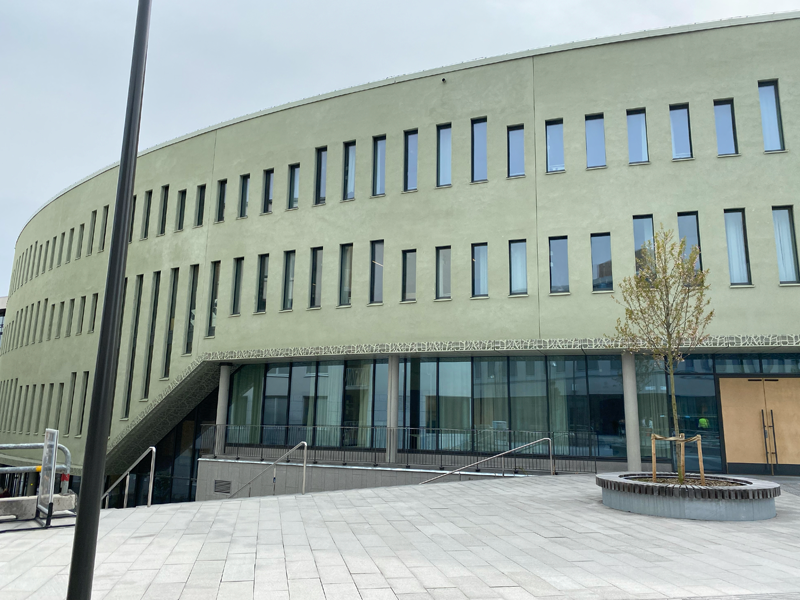From Amplitudes to Gravitational Waves
Albano Building 3

General
The detection of gravitational waves from binary systems composed of black holes and/or neutron stars by the LIGO/Virgo/KAGRA collaborations has initiated a new era for precision studies of the cosmos. At the same time, quantum-field-theory approaches are being used to develop new mathematical tools for studying the non-linear problem of gravity, incorporating the remarkable structures of scattering amplitudes.
This Nordita conference "From Amplitudes to Gravitational Waves" (24–28 Jul 2023) serves as the focus event and grand finale of the adjacent Nordita program "Amplifying Gravity at All Scales" (26 Jun - 21 Jul). The conference is devoted to QFT-inspired methods applied to general relativity, ranging from scattering amplitudes to gravitational waves.
Zoom details:
The conference talks are streamed live on Zoom:
https://uu-se.zoom.us/j/69240630032
Meeting ID: 692 4063 0032
Speakers
- Massimo Bianchi
- Alessandra Buonanno
- Lucile Cangemi
- Mariana Carrillo-Gonzalez
- Tim Cohen
- Andrea Cristofoli
- Tobias Hansen
- Carlo Heissenberg
- Martijn Hidding
- Gregor Kälin
- Hayden Lee
- Sebastian Mizera
- Gustav Mogull
- Silvia Nagy
- Adam Pound
- Ana-Maria Raclariu
- Michael Ruf
- Evgeny Skvortsov
- Charlotte Sleight
- David Stefanyszyn
- Tom Taylor
- Gabriele Travaglini
- Maarten van de Meent
- Justin Vines
- Congkao Wen
- Akshay Yelleshpur
Organizers
- Daniel Baumann
- Zvi Bern
- Alessandra Buonanno
- John Joseph Carrasco
- Paolo Di Vecchia
- Henrik Johansson
- Andrea Puhm
- Oliver Schlotterer
Schedule
| Time | Monday | Tuesday | Wednesday | Thursday | Friday |
| 09:30-10:30 | Raclariu | Buonanno | Stefanyszyn | Mizera | Pound (9:50am) |
| 10:30-11:00 | Coffee | Coffee | Coffee | Coffee | Coffee |
| 11:00-11:40 | Roiban | Vines | Cohen | Taylor | Skvortsov |
| 11:40-12:20 | Ruf | Cangemi | Lee | Yelleshpur | Sleight |
| 12:20-13:20 | Lunch | Lunch | Lunch | Lunch | Lunch |
| 13:20-14:20 | Lunch | Lunch | Lunch | Lunch | Lunch |
| 14:20-15:00 | Kälin | Travaglini | - | Hansen | - |
| 15:00-15:40 | Mogull | Cristofoli | - | Hidding | - |
| 15:40-16:10 | Coffee | Coffee | - | Coffee | - |
| 16:10-16:50 | Heissenberg | Carrillo-Gonzalez | - | Bianchi | - |
| 16:50-17:30 | van de Meent | Nagy | - | Wen | - |
| 18:30 | Reception | - | - | Dinner (19:00) | - |
Conference Photo

Venue
Talks take place in Auditorium 4, Albano 2 building.



Registration
Registration for on-site participation closed on June 15.
Hotels and local transport
Nordita is located within walking distance of several hotels in the northern part of central Stockholm, which all provide high-quality accommodation. The nearest metro stop to Nordita is the red-line "Tekniska högskolan", which allows for convenient commuting to hotels further away.
Sponsored by:
The program is supported through funding from Nordita, Uppsala University and the Knut and Alice Wallenberg Foundation:



